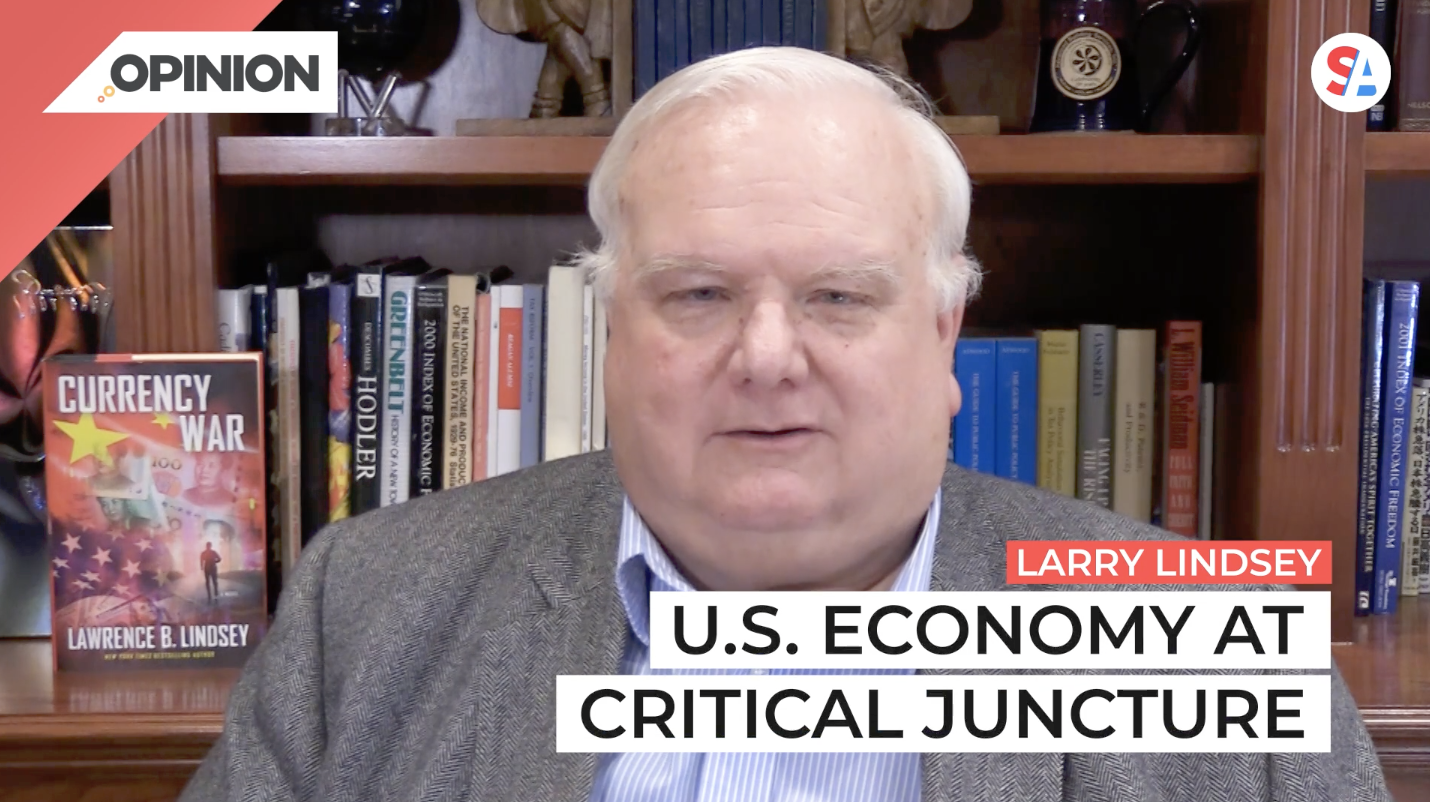
Commentary
-
Our commentary partners will help you reach your own conclusions on complex topics.
The US economy right now is at a very critical juncture. The good news is employment is booming.
The Labor Department just put out its job survey, which it calls the JOLT survey, job openings and labor turnover. The data was for February a little bit dated. But it shows that once again, a near record 11 point 3 million job openings are available. By contrast, the unemployment rate is just 6.3 million, meaning there’s almost twice as many jobs available as there are unemployed people. And that 11 point 3 million is well above what it’s been in the past. Just before COVID, it was 7 million. And more traditionally, if you go back five years from there, it was about 5 million, huge amount of job openings unprecedented.
And not only that, three times as many people are quitting their jobs as are laid off for economic reasons. Why? Because workers now have bargaining power. If they’re not happy with their jobs, if they’re not getting enough money, they quit, and they get a better pay somewhere else. That is a booming labor market.
Now, business surveys say everything is okay now. But businesses are a little bit nervous about what’s going to happen going forward.
A recent survey by a company called Market which is one of the two biggest business surveys found that business expectations for the next five months are lower than they been since the middle of last year.
Same thing is true in small business surveys. Current conditions are great, but folks are a little bit nervous about the future.
Well, the reason for their nervousness comes back to the consumer. And there have been two big consumer surveys just released. One is by the University of Michigan, one is by the Conference Board. In the University of Michigan survey, the consumers confidence about things going forward are at their lowest level since the great recession and back in 2011.
The reason is they have the highest inflation expectations since November of 1981, 40 years ago, when we had just been coming off a period of double digit inflation.
Not only that, they determined that their living standards going forward are probably the least that they been since the 1940s. People are very pessimistic that their incomes are going to keep pace with inflation. And the Conference Board survey also said the present conditions are okay. But expectations going forward are also the lowest since the Great Recession about 10 years ago.
So what we have is a very, very nervous group of consumers who have made businesses quite nervous about sales going forward. And the culprit is inflation. It’s not surprising that this is the case, inflation has exceeded the pace of growth of average hourly earnings now since the beginning of 2021. By fully 2%. We may be working more, but our spending power has gone down. And that is a fairly unprecedented condition.
In my judgment, we’re about to be hit by another much larger inflation shock that comes about largely from what is happening in Ukraine, the sanctions that were imposed, and the breakdown in all kinds of markets. For example, we’ve seen the oil market, but the same thing is happening in the grains market. In the fertilizer markets of food prices are going to go up, in the nickel market which is the basis for batteries and also stainless steel, and even in the neon market which I frankly didn’t even know had a market until recently. And Neon is essential for building solar panels and microchips. All of these are going to create bottlenecks.
We learned from COVID that when you have these supply chain issues you never know quite where they end up. It’s like a tangled web. So I think we’re about to have another hit of inflation, which is actually what consumers are feeling. Their real incomes spending power going to go down. And that’s why businesses are now getting nervous.
-
Election 2024 will boil down to the Great Lakes states
Pollsters and pundits have been engaged in a long debate about how Biden or Trump might win the 2024 election, with much of their focus spent on the “swing state” electoral battlegrounds. While the winners of Alabama or California may be obvious, for instance, who wins Pennsylvania is a more difficult question. Watch the above…
-
Why the Fed should consider Theory of Reflexivity when fixing policy
The Theory of Reflexivity, often used in the context of economics and financial markets, implies that investors don’t base their decisions on reality but on their perceptions of reality. This creates a feedback loop where investors’ perceptions influence economic fundamentals, which in turn alter investor perceptions. Watch the above video as Straight Arrow News contributor…
-
Federal Reserve surpassed its own wildest expectations
On May 14, the U.S. Bureau of Labor Statistics released the most current producer price index (PPI) report, which showed an increase of 0.5% month-over-month in April. After the report’s release, U.S. Federal Reserve chairman Jerome “Jay” Powell said that while he believes the current policy rate is restrictive by many measures, the Fed needs…
-
Polls give slight advantage to Trump in Electoral College
With the U.S. general election only six months away, leading candidates President Joe Biden and former President Donald Trump appear to be engaged in a very close contest. In their 2020 race, the winner of the Electoral College was ultimately determined by a relative handful of voters in just a few swing states, even though…
-
College sports is big money but not everyone benefits
March Madness has wrapped up and Caitlin Clark has emerged as a household name as well as a wealthy student athlete. Earning over $3 million throughout her college career, her success stands in stark contrast to the previous notion that collegiate athletes shouldn’t earn anything beyond their scholarship. Straight Arrow News contributor Larry Lindsey examines…
Latest Opinions
-
 U.S. Department of Defense
U.S. Department of Defense
Congress still trying to figure out how to reduce wasteful military spending
-
 DVIDS
DVIDS
US Navy, Air Force making waves with new weapons at RIMPAC
-
 Getty Images
Getty Images
Israeli PM Netanyahu meets with Trump at Mar-a-Lago
-
 Getty Images
Getty Images
Growing US nuclear power resurgence reaches the nation’s heartland
-
 Getty Images
Getty Images
Beer from the sun, other solar thermal projects get government funding
Popular Opinions
-
In addition to the facts, we believe it’s vital to hear perspectives from all sides of the political spectrum.


